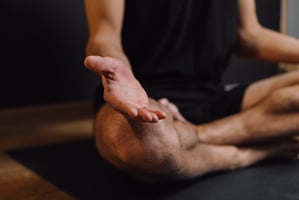When it comes to training, there are a million and one different variables we can tweak to suit our...
TRAINING AROUND THE MENSTRUAL CYCLE
During some gym sessions do you feel on top of the world?
Whilst in others just your warm-up weight feels like your maxing out?
One of the reasons you might feel like this could be related to where you are in your menstrual cycle.
The day-to-day changes of your hormones that come with your menstrual cycle leaves every day feeling different.
It is important to remember that everyone is different. You might relate to every point in this blog, or there might just be one or two.
Please speak to your GP if you are ever worried about your cycle.
Menstrual Cycle Phases
There are four phases of the menstrual cycle:
Menstruation
-
This is when hormones are at their lowest.
-
With the bleed, there is an associated inflammatory response and this travels around the body through your blood which is the cause of many symptoms.
-
If you suffer from cramps during this time, low-intensity exercise such as walking can help aid the release of endorphins and dopamine, which is a natural painkiller!
-
Neuromuscular control might be lower, so consider taking longer to warm up before beginner sessions. This might mean turning up 5 minutes early to a session to get more time to warm up and activate your muscles to ensure you are feeling ready for your session ahead.
-
Recovery might be a little slower here due to the increased inflammation. Focus on good recovery strategies e.g. sleeping and eating well, stretching, foam rolling etc.
Follicular Phase
-
This phase begins during menstruation.
-
An increase in oestrogen contributes to an increase in antioxidants, which can aid the recovery of muscle tissue after an intense training session.
-
Cardiovascular function and bone health are possibly at their highest here.
-
Your energy might be at its highest here.
-
Some research suggests you adapt better to strength and conditioning training (aka your CaliUnity sessions) so perhaps is a good time to aim for PBs. Time for your best handstands and pullups!
Ovulation
-
Considered the ‘high hormone phase’ with oestrogen and progesterone on the rise.
-
There is a possible increase in body temperature, which should be considered when training in hot conditions. Make sure you are hydrating well and drinking lots of water throughout the day and during your training sessions.
-
The rise in progesterone can increase the muscle’s ability to break down muscle fibre. This is essentially what happens in muscle growth so you may see some good progress in physique based goals and the data from the InBody machine.
Luteal Phase
-
Usually 12-14 days before menstruation (the bleed).
-
At the start, progesterone rises as it tells the lining of the uterus to grow before dropping which prompts the release of the uterus lining.
-
A common time to experience the worst of your premenstrual symptoms (PMS): headaches, mood swings, bloating, cravings and whatever else you might personally experience!
-
Coordination and balance might be lacking, so perhaps switch our unilateral lower body movements (single-leg movements e.g. split squats or side plank raises) for bilateral movements (double leg movements e.g. squats and planks).
Tracking your Cycle
One of the most empowering and important things you can do is track your menstrual cycle.
There are a number of apps you can use or create your own.
Either way, understanding and identifying your own patterns is going to help you get the most out of every gym session.
Despite the research suggesting certain times might feel harder than others, this is not saying you should categorically not be in the gym at certain times of your cycle.
You can train during every phase and feel great for it!
Just make sure you are listening to your body.
If you swap a gym session for a walk as you are cramping hard, that is okay!
If you were expecting to struggle but actually don’t… Well, amazing!
And if you are finding things a little tough, and you know that it is a time when you typically do, it can help externalise those feelings of frustration and leave the negative thoughts behind!
Losing your period
Secondary Amenorrhea is the absence of menstruation for 3 months (for those with regular cycles) or 6 months (for those with irregular cycles).
Functional Hypothalamic Amenorrhea is caused by low energy intake (calories), excessive exercise, weight loss, stress or a combination of all these factors.
This is something to be very wary of.
Losing your period is never ‘normal’ under these circumstances.
It can happen to anyone, not just elite level athletes.
If you begin to notice an absence of a period or suddenly things have turned very irregular, please consult your doctor.
Menstrual Tracker Suggestions
Here are some app trackers that our team have used and can recommend:
Clue
Cycles
Flo




